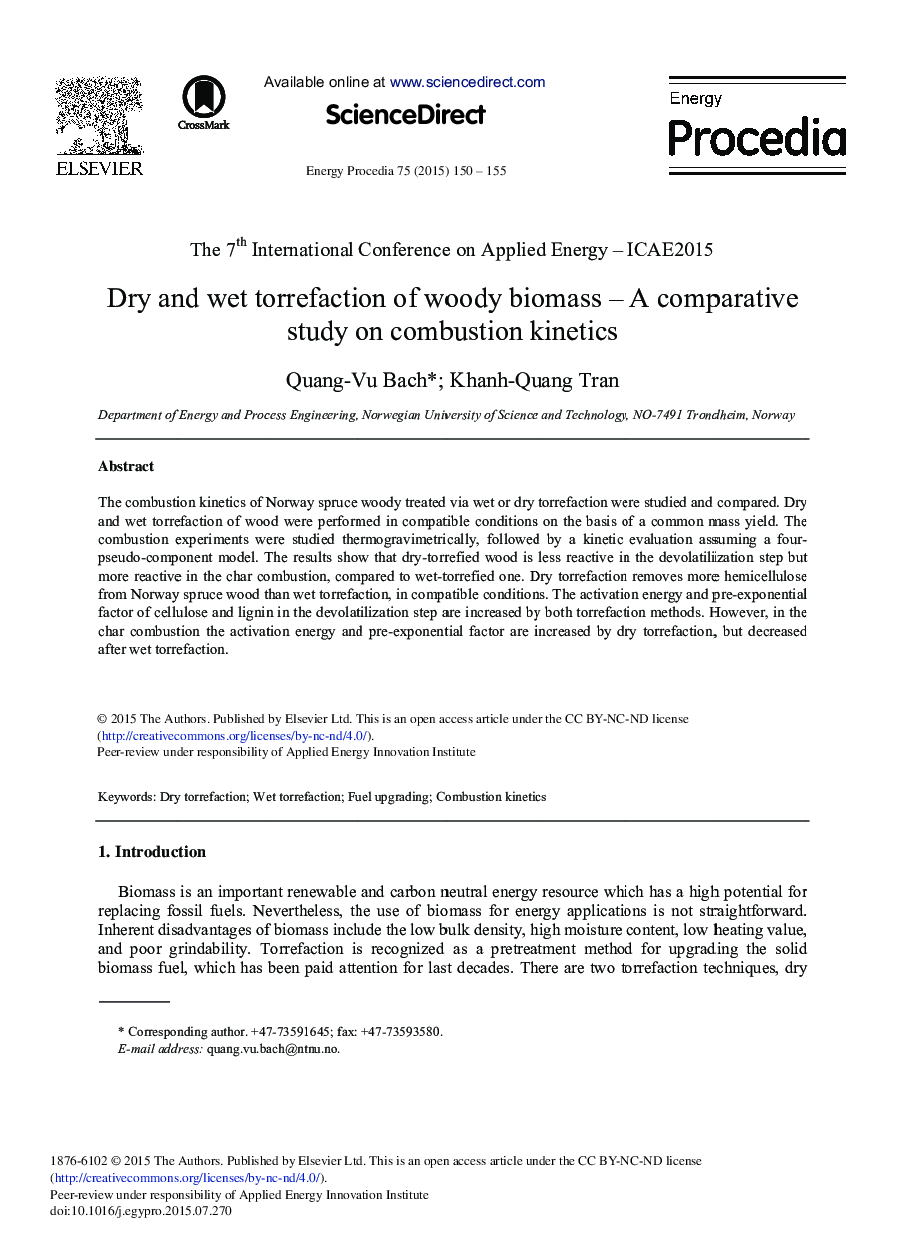| Article ID | Journal | Published Year | Pages | File Type |
|---|---|---|---|---|
| 1509506 | Energy Procedia | 2015 | 6 Pages |
The combustion kinetics of Norway spruce woody treated via wet or dry torrefaction were studied and compared. Dry and wet torrefaction of woodwere performed in compatible conditions on the basis of a common massyield. The combustion experiments were studiedthermogravimetrically, followed by a kinetic evaluation assuming a four-pseudo-component model. The results show that dry-torrefied wood is less reactive in the devolatilization step but more reactive in the char combustion, compared to wet-torrefied one. Dry torrefaction removesmore hemicellulose from Norway spruce wood than wet torrefaction, in compatible conditions. The activation energy and pre-exponential factor of cellulose and lignin in the devolatilization step are increased by both torrefaction methods. However, in the char combustion the activation energy and pre-exponential factor areincreased by dry torrefaction, but decreased after wet torrefaction.
